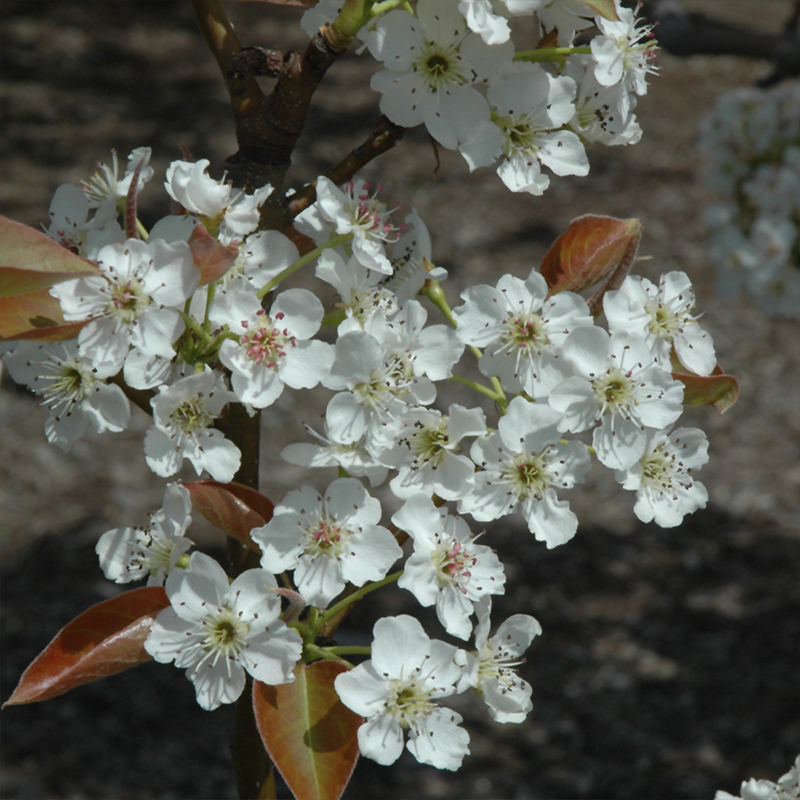You're shopping: DAVIDSONVILLE
(change store)
Fruit Trees and Fruit Shrubs - PEAR 'CHOJURO' (ASIAN) 7G DWARF

PEAR 'CHOJURO' (ASIAN) 7G DWARF
no reviews for this product. Login to place a review.
Your Price $45.00
Item Number 281128
In store quantity:
0
$45.00/ EA
Pear 'Chojuro' (Asian)
7-Gallon, Dwarf
Height: 8-10 feet tall.
Spread: 8-10 feet.
Sunlight: Full sun.
Hardiness Zone: 5a.
Other Names: Pyrus pyrifolia 'Chojuro'
Description:
A classic Asian pear variety known for its crisp texture, rich flavor, and golden-bronze skin. 'Chojuro' produces medium to large, round pears with a honey-like sweetness and a hint of butterscotch. This high-yielding tree is valued for its vigorous growth, disease resistance, and excellent storage capabilities. Its compact dwarf size makes it ideal for small orchards and home gardens.
Edible Qualities:
Pear 'Chojuro' is prized for its firm, juicy flesh and unique caramel-like sweetness. Unlike European pears, it is enjoyed crisp and does not require softening before eating.
The fruit is most often used in the following ways:
- Fresh Eating
- Salads
- Baking
- Canning
- Long-Term Storage
Features & Attributes:
Pear 'Chojuro' features glossy green foliage throughout the growing season, turning shades of orange and yellow in the fall. In spring, it produces abundant clusters of fragrant white blossoms that attract pollinators. Its round, golden-bronze fruit ripens in late summer to early fall, hanging beautifully on the branches.
This is a deciduous tree with a naturally upright and spreading growth habit. It is highly productive and resistant to common pear diseases, making it an excellent choice for home growers seeking low-maintenance fruit production.
Aside from its primary use as an edible, Pear 'Chojuro' is suitable for the following landscape applications:
- Orchard/Edible Landscaping
- Home Gardens
Planting & Growing:
Pear 'Chojuro' will grow to be about 8-10 feet tall at maturity, with a spread of 8-10 feet. It has a low canopy with a typical clearance of 3-4 feet from the ground. It grows at a medium rate and, under ideal conditions, can be expected to live for 50 years or more.
This tree thrives in full sun and well-drained soil. It requires cross-pollination with another Asian pear variety for optimal fruit production. It is drought-tolerant once established but benefits from consistent moisture, particularly during fruit development. Annual pruning enhances airflow and fruit quality. A layer of mulch around the base helps retain soil moisture and regulate temperature.
Additional Characteristics:
- Late Summer Ripening
- Pollination Required
- High-Yielding
- Disease Resistant
- Fragrant Spring Blossoms
